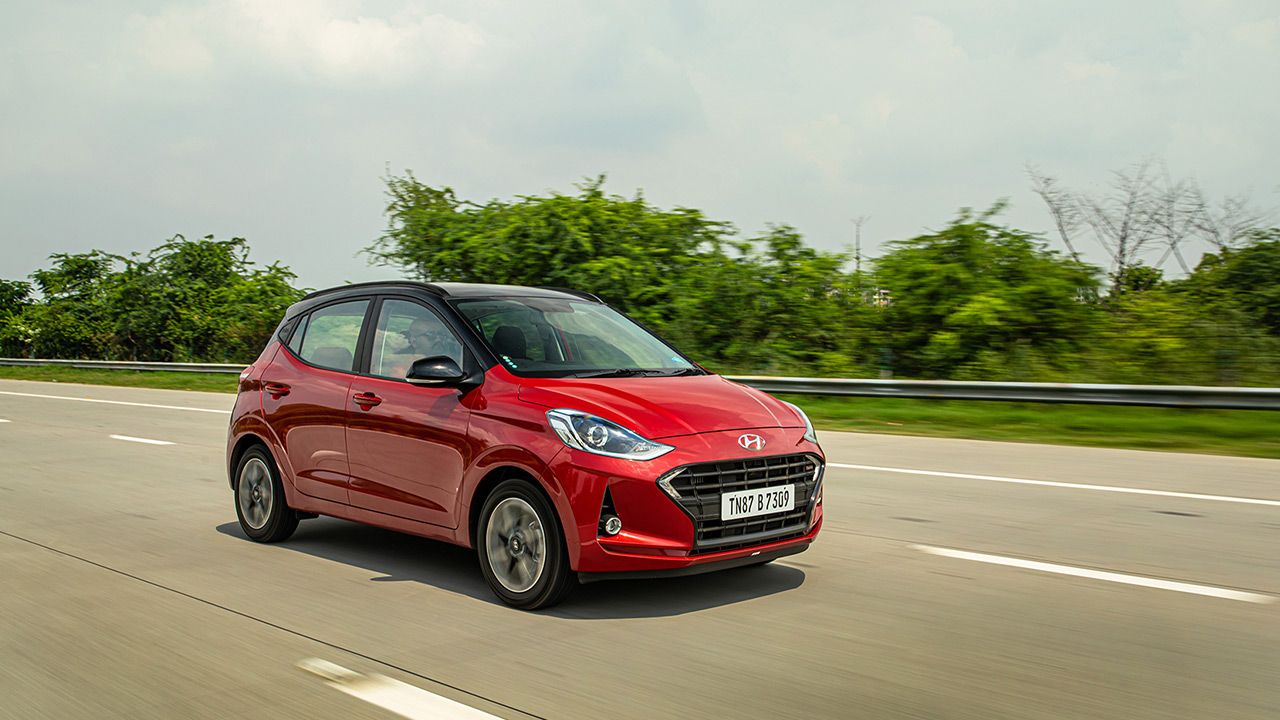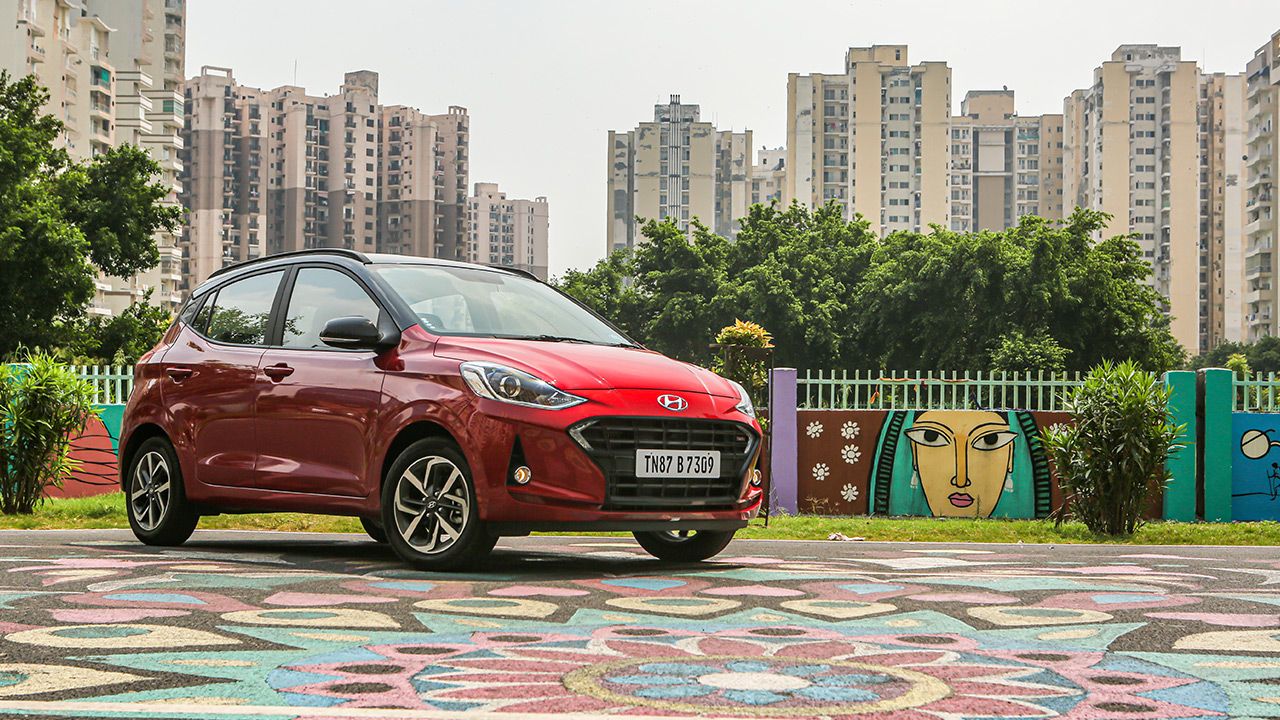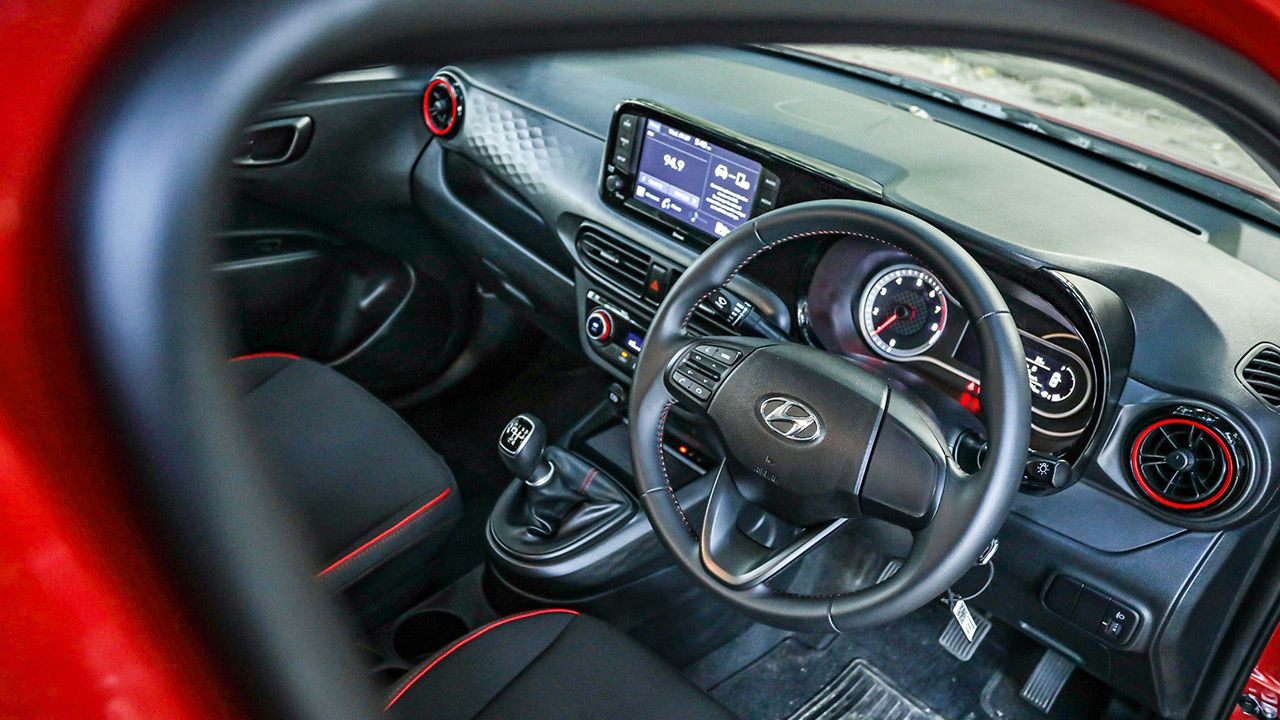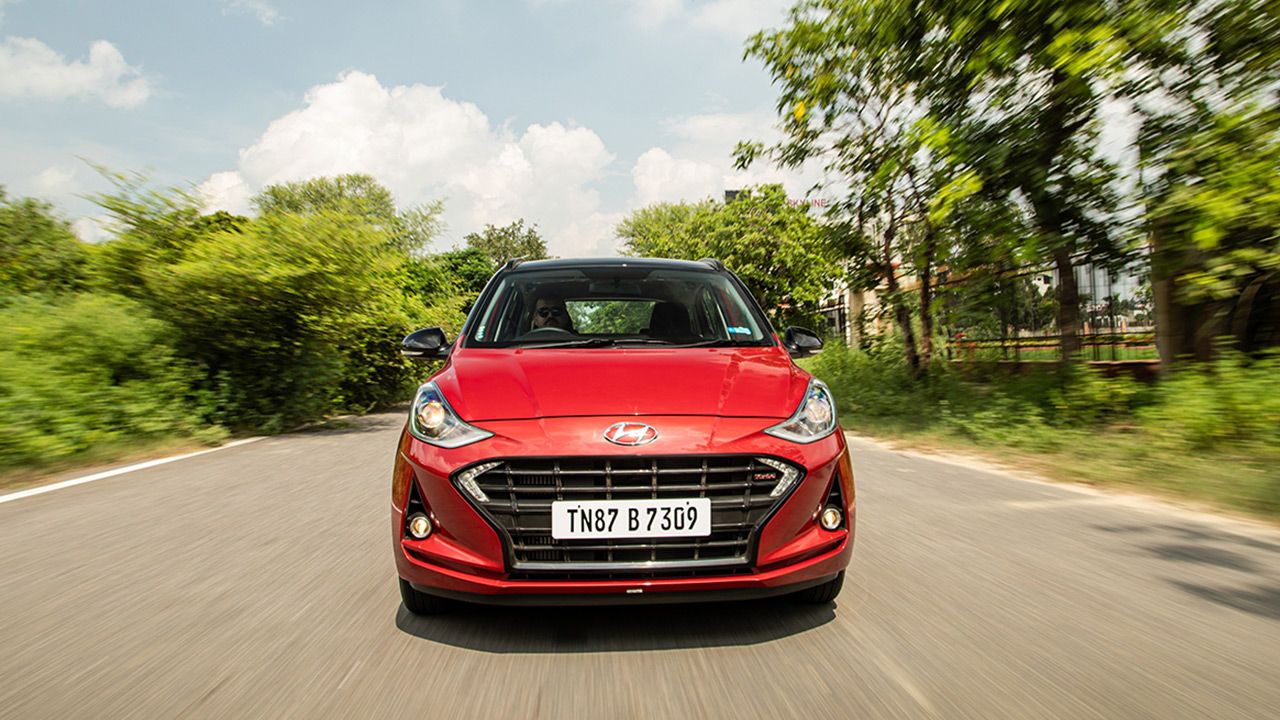Hyundai has equipped the Grand i10 Nios with a peppy turbo petrol motor. Does the new engine make it marginally quicker or there's more zing on offer? We find out.
Small turbo petrol engines – the sort of engines you see in all kinds of cars apart from, quite ironically, small hatchbacks. Come to think of it, if there’s is a kind of vehicle to which these peppy and frugal engines belong the most, it has to be the hatchback. But, because they’re expensive, and India is a price-sensitive market, carmakers don’t seem too keen on the idea of turbo engines under the hood of mass-market hatchbacks. Sure, the likes of Maruti Suzuki Baleno RS and Tata Tiago JTP spiced things up with 1.0-litre turbo motors, but both are now, sadly, out of commission.
Now, while 2020 might not have gone to plan, there’s some good news – 1.0-litre turbo engines are making a comeback in small hatchbacks. It started with Volkswagen offering the 1.0-litre TSI motor with the Polo – along with a manual gearbox, nonetheless. And now, we’ve also got the Hyundai Grand i10 Nios Turbo. It's like waiting for ages for a bus to arrive, and then two come along at once!
We’ve already managed to get our hands on the new Polo, and despite being a decade old car technically, it turned out to be quite a hoot. But, personally speaking, the Grand i10 Nios Turbo is what interests me a little more, as it’s a more modern and up-to-date car. But is it fun to drive?
Sportz-y Base
For a supposedly performance-oriented version of the regular Grand i10 Nios, the Turbo version does little to distinguish itself from its naturally aspirated sibling. Apart from ‘Turbo’ badging on the grille and boot-lid, there’s nothing different about the Nios Turbo. But since it’s based on the Sportz variant – one lower from the top-end Asta trim – it gets all the bells and whistles, such as projector lamps, diamond-cut alloy wheels, and dual-tone paint scheme. That’s all good, but I wish Hyundai had offered it with the optional N Line kit, which is available in European markets (sporty grille, larger wheels, etc.) – it’d have given the Nios Turbo some character of its own. Overall, apart from the Tiago-like rear-end, I like the Nios’ compact and inoffensive design though. But it could definitely do with a little more aggression, especially in the Turbo derivative.
Inside, there’s a similar story. The cabin is unchanged from the regular version. This red-black dual-tone car gets an all-black theme along with red inserts and contrast stitching, which make it feel kind of sporty. The seats are supportive and creature comforts are the same as regular Sportz version – you get 8-inch touchscreen infotainment, wireless smartphone charging, and much more. Apart from the scratchy plastics on the doors, the quality of materials, and the fit-and-finish are top-notch. The most impressive thing about this car is its rear-seat space, which is, well, very spacious. In terms of practicality then, it’s still as good.
Peppy Puppy
On duty here is Hyundai group’s 1.0-litre three-cylinder turbo engine, which is also offered in the Venue, the new Verna, and the recently launched Kia Sonet. However, the engine in the Nios has been detuned, as it produces 99bhp as opposed to 118bhp in other cars. Torque, at 172Nm, is identical to the others though. The manual gearbox in the car is a five-speed unit and not a six-speeder like others.
Now you may think the Grand i10 Nios Turbo is getting a stepchild like treatment here, but that’s not the case. You see, this is a much lighter car as compared to its other siblings, and as a result, it’s a really fast machine! In fact, it can clock 0 – 100km/h in under 10 seconds! The turbo motor has turned the car into an absolute hoot.
First and foremost, there’s hardly any turbo lag under 1,500rpm, which means that you’ll struggle to stall it even when you’re pulling it from as low as 15km/h in 2nd gear. And once the tach needle flies past 1,800rpm, your surroundings blur quite instantly. From 2,000rpm to 6,500rpm, this motor runs riot! The torque delivery is linear, and it revs quite freely all the way to its redline, which is what I found very exciting. Not to mention, the engine sounds quite sporty and at times, you can also hear the electric wastegate making fluttering sounds during lift-offs. The most impressive thing is the engine refinement and cabin insulation though. Even when you’re revving the daylights out of this motor, you hardly hear anything inside the cabin. At idle, however, there are mild vibrations through the doors and gear lever.
Coming to the gearbox, it’s smooth-shifting and has short and precise throws. The clutch action is light, making this an effortless drivetrain in the city. That said, the gearbox's taller ratios and the wider powerband of the turbo motor mean that you don’t really find yourself working the transmission that often. You also don't miss that extra cog, because even on highways, you can comfortably cruise at 120km/h with the engine spinning at 2,500rpm in 5th gear. The tall gear ratios also help in extracting decent fuel economy figures – even with a heavy right foot, I managed 13 – 15km/l in mixed driving conditions.
The Grand i10 Nios has a good base setup, which we already experienced last year during our annual track day. The chassis is rigid and the suspension setup is a little firm – in fact, in the Turbo version, the spring rates have been reworked, so it’s even firmer. Overall, the handling characteristics are quite neutral. Its body roll is minimal, and when you’re cornering hard, the nose stays flat and the car stays on the intended track. The steering offers good feedback and is quite direct (surprising for a Hyundai, we know). The only killjoy is the low rolling resistance tyres. When you’re driving enthusiastically, they scream and give up quite easily. On the upside, you’ll find yourself pulling wheelspins in 2nd gear due to the tyres' poor grip levels, and maybe it's just me, but I find it to be very gratifying.
Head & heart connection
You know there aren’t many cars on the market that appeal to your head and heart at the same time, but the Grand i10 Nios Turbo is one of the few exceptions! The turbo motor is a hoot, the car's ride-and-handling balance is spot on, the cabin is spacious, and it’s packed with all the modern features you’d want in a hatchback these days. Sure, it costs nearly a lakh more than the regular Sportz version, but given the smile that the forced-induction motor puts on your face, I think it's justified. All Hyundai needs to do now is slap the N Line kit on the Nios Turbo and turn it into a complete hot hatch for the masses.
- Hyundai Grand i10 Nios Turbo
Engine: 998cc / 3-Cylinder / Turbocharged
Fuel: Petrol
Transmission: 5-Speed Manual / Front-Wheel Drive
Power: 99bhp @ 6,000rpm
Torque: 172Nm @ 1,500 - 4,000rpm
Price: ₹7.75 Lakh (Ex-Showroom, New Delhi)
X-factor: Appeals to the head & heart at the same time. Pretty much the perfect hot-hatch for masses.
| Pros • Engine performance • Practical & exciting city car | Cons • Pricey • Needs better tyres |




























Write your Comment